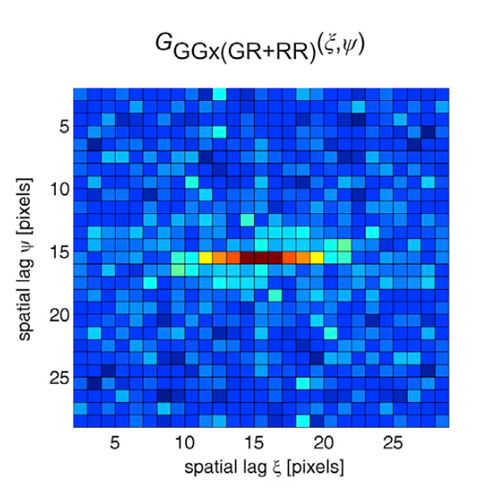Pulsed Interleaved Excitation Fluctuation Imaging Jelle
20-Aug-2014
Biophysical Journal, 2014, http://dx.doi.org/10.1016/j.bpj.2013.05.059, Volume 105, 848–861 published on 20.08.2014
Biophysical Journal, online article
Fluorescence fluctuation imaging is a powerful means to investigate dynamics, interactions, and stoichiometry of proteins inside living cells. Pulsed interleaved excitation (PIE) is the method of nanosecond alternating excitation with time-resolved detection and allows accurate, independent, and quasi-simultaneous determination of fluorescence intensities and lifetimes of different fluorophores. In this work, we combine pulsed interleaved excitation with fluctuation imaging methods (PIE-FI) such as raster image correlation spectroscopy (RICS) or number and brightness analysis (N&B). More specifically, we show that quantitative measurements of diffusion and molecular brightness of Venus fluorescent protein (FP) can be performed in solution with PIE-RICS and compare PIE-RICS with single-point PIE-FCS measurements. We discuss the advantages of cross-talk free dual-color PIE-RICS and illustrate its proficiency by quantitatively comparing two commonly used FP pairs for dual-color microscopy, eGFP/mCherry and mVenus/mCherry. For N&B analysis, we implement dead-time correction to the PIE-FI data analysis to allow accurate molecular brightness determination with PIE-NB. We then use PIE-NB to investigate the effect of eGFP tandem oligomerization on the intracellular maturation efficiency of the fluorophore. Finally, we explore the possibilities of using the available fluorescence lifetime information in PIE-FI experiments. We perform lifetime-based weighting of confocal images, allowing us to quantitatively determine molecular concentrations from 100 nM down to <30 pM with PIE-raster lifetime image correlation spectroscopy (RLICS). We use the fluorescence lifetime information to perform a robust dual-color lifetime-based FRET analysis of tandem fluorescent protein dimers. Lastly, we investigate the use of dual-color RLICS to resolve codiffusing FRET species from non-FRET species in cells. The enhanced capabilities and quantitative results provided by PIE-FI make it a powerful method that is broadly applicable to a large number of interesting biophysical studies.











